Mechanical Properties of Tin Slag Mortar
Abstract
:1. Introduction
2. Experiment
2.1. Materials
2.2. Particle Size Gradation
2.3. Mix Proportioning and Sample Preparation
2.4. Testing Procedures
3. Experimental Results
3.1. Workability
3.2. Alkali–Silica Reactivity
3.3. Compressive Strength
3.4. Splitting Tensile Strength
3.5. Flexural Strength
4. Conclusions
- Grading has a great effect on the fresh properties of TS mortar. Ungraded mortar was observed to have reduced workability as TS replacement increased, whereas grading improved the workability and reduced the water demand of graded TS mortar.
- Mortar containing 50% showed higher compressive strength than the reference mortar at all ages. Additionally, TS100 mortars had a compressive strength comparable to the control.
- The splitting tensile and flexural strengths of tin slag mortars were higher than the corresponding control mortars.
- The expansions of TS mortars were below allowable limits of 0.1%.
- TS could be used as a substitute for natural sand for the production of mortars. This would minimize cost and natural resource depletion, thus engendering the sustainability of fine aggregate.
Author Contributions
Funding
Data Availability Statement
Conflicts of Interest
References
- Klee, H. The cement sustainability initiative. Cem. Sustain. Initiat. 2017, 157, 9–12. [Google Scholar]
- Li, H.; Huang, F.; Cheng, G.; Xie, Y.; Tan, Y.; Li, L.; Yi, Z. Effect of granite dust on mechanical and some durability properties of manufactured sand concrete. Constr. Build. Mater. 2016, 109, 41–46. [Google Scholar] [CrossRef]
- Makhloufi, Z.; Kadri, E.H.; Bouhicha, M.; Benaissa, A.; Bennacer, R. The strength of limestone mortars with quaternary binders: Leaching effect by demineralized water. Constr. Build. Mater. 2012, 36, 171–181. [Google Scholar] [CrossRef]
- Zhao, Z.; Qu, X.; Li, F.; Wei, J. Effects of steel slag and silica fume additions on compressive strength and thermal properties of lime-fly ash pastes. Constr. Build. Mater. 2018, 183, 439–450. [Google Scholar] [CrossRef]
- Ogundiran, M.B.; Nugteren, H.W.; Witkamp, G.J. Immobilisation of lead smelting slag within spent aluminate-fly ash based geopolymers. J. Hazard. Mater. 2013, 248–249, 29–36. [Google Scholar] [CrossRef]
- Prem, P.R.; Verma, M.; Ambily, P.S. Sustainable cleaner production of concrete with high volume copper slag. J. Clean. Prod. 2018, 193, 43–58. [Google Scholar] [CrossRef]
- Prasad, V.D.; Prakash, E.L.; Abishek, M.; Dev, K.U.; Kiran, C.K.S. Study on concrete containing Waste Foundry Sand, Fly Ash and Polypropylene fibre using Taguchi Method. Mater. Today Proc. 2018, 5, 23964–23973. [Google Scholar] [CrossRef]
- Tamanna, N.; Tuladhar, R.; Sivakugan, N. Performance of recycled waste glass sand as partial replacement of sand in concrete. Constr. Build. Mater. 2020, 239. [Google Scholar] [CrossRef]
- Pandey, P.; Harison, A.; Srivastava, V. Utilization of Waste Foundry Sand as Partial Replacement of Fine Aggregate for Low Cost Concrete. Inpressco 2015, 5, 3535–3538. [Google Scholar]
- Kashani, A.; Ngo, T.D.; Hajimohammadi, A. Effect of recycled glass fines on mechanical and durability properties of concrete foam in comparison with traditional cementitious fines. Cem. Concr. Compos. 2019, 99, 120–129. [Google Scholar] [CrossRef]
- Izard, C.F.; Müller, D.B. Tracking the devil’s metal: Historical global and contemporary U.S. tin cycles. Resour. Conserv. Recycl. 2010, 54, 1436–1441. [Google Scholar] [CrossRef]
- Shakil, U.A.; Bin, S.; Hassan, A. Behavior and properties of tin slag polyester polymer concrete confined with FRP composites under compression. J. Mech. Behav. Mater. 2020, 29, 44–56. [Google Scholar] [CrossRef]
- Hashim, M.J.; Mansor, I.; Ismail, M.P.; Sani, S. Preliminary study of tin slag concrete mixture. In Proceedings of the IOP Conference Series: Materials Science and Engineering, International Nuclear Science, Technology and Engineering Conference 2017 (iNuSTEC2017), Selangor, Malaysia, 25–27 September 2017; Volume 298. [Google Scholar] [CrossRef] [Green Version]
- Rustandi, A.; Nawawi, F.; Cahyadi, A. Evaluation of the suitability of tin slag in cementitious materials: Mechanical properties and Leaching behaviour Evaluation of the suitability of tin slag in cementitious materials: Mechanical properties and Leaching behaviour. In Proceedings of the IOP Conference Series: Materials Science and Engineering, International Conference on Chemistry and Material Science (IC2MS) 2017, Malang, Indonesia, 4–5 November 2017; Volume 299. [Google Scholar] [CrossRef]
- ASTM International, Standard Test Methods for Chemical Analysis of Hydraulic Cement1. 2004; Volume i, 1–31.
- ASTM International, Standard Test Method for Density , Relative Density (Specific Gravity ), and Absorption. 2004; 1–6.
- ASTM International, Standard Specification for Concrete Aggregates. 2001; Volume 04.
- ASTM International, Standard Test Method for Flow of Hydraulic Cement Mortar. 2013; 1–2. [CrossRef]
- ASTM International, Standard Test Method for Compressive Strength of Hydraulic Cement Mortars. 2005; Volume 04, 1–6.
- ASTM International, Standard Test Method for Splitting Tensile Strength of Cylindrical Concrete Specimens. 2006; 4–8.
- ASTM International, Standard Test Method for Flexural Strength of Hydraulic-Cement Mortars. 1998; Volume 04, 2–7.
- Youness, D.; Yahia, A.; Tagnit-Hamou, A. Coupled rheo-physical effects of blended cementitious materials on wet packing and flow properties of inert suspensions. Constr. Build. Mater. 2020. [Google Scholar] [CrossRef]
- Estephane, P.; Garboczi, E.J.; Bullard, J.W.; Wallevik, O.H. Three-dimensional shape characterization of fine sands and the influence of particle shape on the packing and workability of mortars. Cem. Concr. Compos. 2019, 97, 125–142. [Google Scholar] [CrossRef]
- Wu, W.; Zhang, W.; Ma, G. Mechanical properties of copper slag reinforced concrete under dynamic compression. Constr. Build. Mater. 2010, 24, 910–917. [Google Scholar] [CrossRef]
- Abdel-Magid, T.I.M.; Hamdan, R.M.; Abdelgader, A.A.B.; Omer, M.E.A.; Ahmed, N.M.R.A. Effect of Magnetized Water on Workability and Compressive Strength of Concrete. Procedia Eng. 2017, 193, 494–500. [Google Scholar] [CrossRef]
- Praveen Kumar, K.; Radhakrishna, X.X. Workability Strength and Elastic Properties of Cement Mortar with Pond Ash as Fine Aggregates. Mater. Today Proc. 2020, 24, 1626–1633. [Google Scholar] [CrossRef]
- Westerholm, M.; Lagerblad, B.; Silfwerbrand, J.; Forssberg, E. Influence of fine aggregate characteristics on the rheological properties of mortars. Cem. Concr. Compos. 2008, 30, 274–282. [Google Scholar] [CrossRef]
- Cu, Y.T.H.; Tran, M.V.; Ho, C.H.; Nguyen, P.H. Relationship between workability and rheological parameters of self-compacting concrete used for vertical pump up to supertall buildings. J. Build. Eng. 2020, 32. [Google Scholar] [CrossRef]
- Pauzi, N.N.M.; Jamil, M.; Hamid, R.; Abdin, A.Z.; Zain, M.F.M. Influence of spherical and crushed waste Cathode-Ray Tube (CRT) glass on lead (Pb) leaching and mechanical properties of concrete. J. Build. Eng. 2019, 21, 421–428. [Google Scholar] [CrossRef]
- Edwin, R.S.; Gruyaert, E.; De Belie, N. Influence of intensive vacuum mixing and heat treatment on compressive strength and microstructure of reactive powder concrete incorporating secondary copper slag as supplementary cementitious material. Constr. Build. Mater. 2017, 155, 400–412. [Google Scholar] [CrossRef]
- ASTM Standard Test Method for Potential Alkali Reactivity of Cement-Aggregate Combinations ( Mortar-Bar Method ). Annu. B ASTM Stand. 2003, i, 1–5.
- Piasta, W.; Zarzycki, B. The effect of cement paste volume and w/c ratio on shrinkage strain, water absorption and compressive strength of high performance concrete. Constr. Build. Mater. 2017, 140, 395–402. [Google Scholar] [CrossRef]
- Rahmani, K.; Shamsai, A.; Saghafian, B.; Peroti, S. Effect of Water and Cement Ratio on Compressive Strength and Abrasion of Microsilica Concrete. Middle East J. Sci. Res. 2012, 12, 1056–1061. [Google Scholar] [CrossRef]
- Sipil, T.; Teknik, F.; Tengah, S.; Teknik, F.; Tengah, S. The effect of coarse aggregate hardness on the fracture toughness and compressive strength of concrete. MATEC Web Conf. 2019, 258, 04011. [Google Scholar]
- Ouda, A.S.; Abdel-gawwad, H.A. The effect of replacing sand by iron slag on physical, mechanical and radiological properties of cement mortar. HBRC J. 2017, 13, 255–261. [Google Scholar] [CrossRef] [Green Version]
- Guo, Y.; Xie, J.; Li, J. Effect of steel slag as fine aggregate on static and impact behaviors of concrete. Constr. Build. Mater. 2018, 192, 194–201. [Google Scholar] [CrossRef]
- Li, L.G.; Lin, C.J.; Chen, G.M.; Kwan, A.K.H.; Jiang, T. Effects of packing on compressive behaviour of recycled aggregate concrete. Constr. Build. Mater. 2017, 157, 757–777. [Google Scholar] [CrossRef]
- Waheed, A. Properties of Concrete Containing Effective Microorganisms Using Tin Slag as Fine Aggregate Replacement. Master’s Thesis, Universiti Teknologi Malaysia, Johor, Malaysia, 2018. [Google Scholar]
- Maitra, S.R.; Reddy, K.S.; Ramachandra, L.S. Load Transfer Characteristics of Aggregate Interlocking. J. Transp. Eng. 2010. [Google Scholar] [CrossRef]
- Darwin, D.; Kozul, R. Effects of Aggregate Type, Size, and Content on Concrete Strength and Fracture Energy; SM Report No. 43, University of Kansas Center for Research, Inc.: Lawrence, KS, USA, 1997. [Google Scholar]

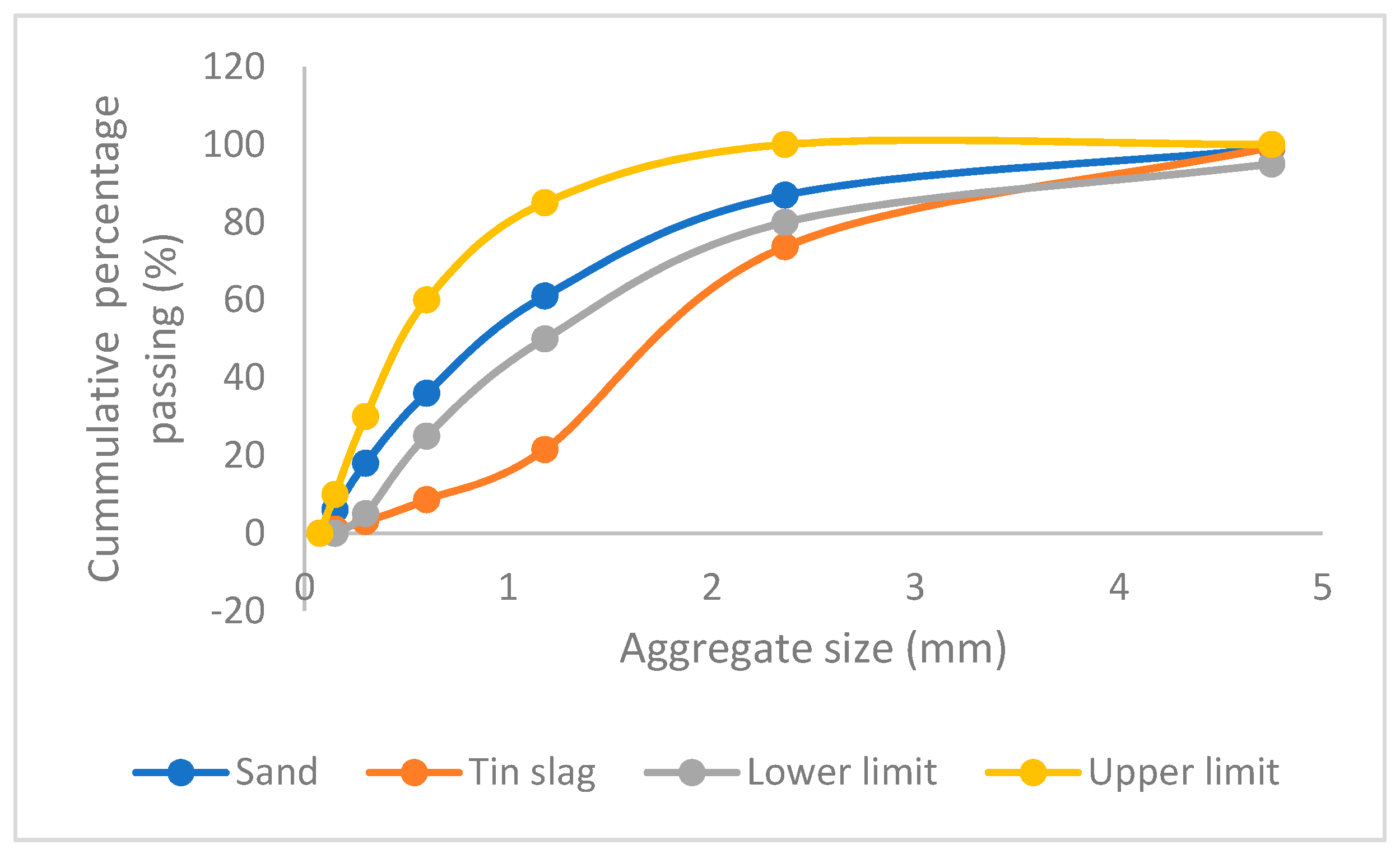
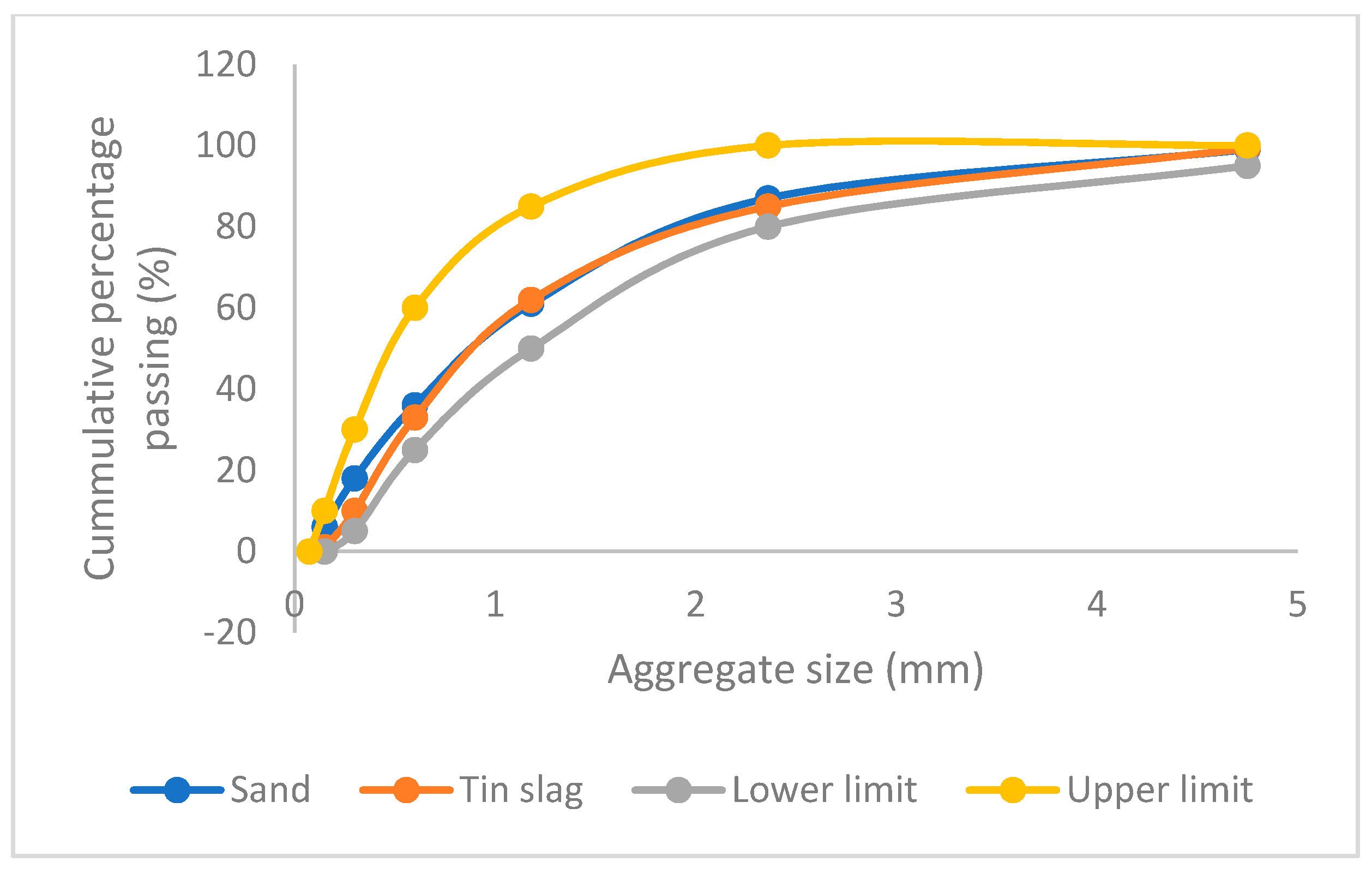
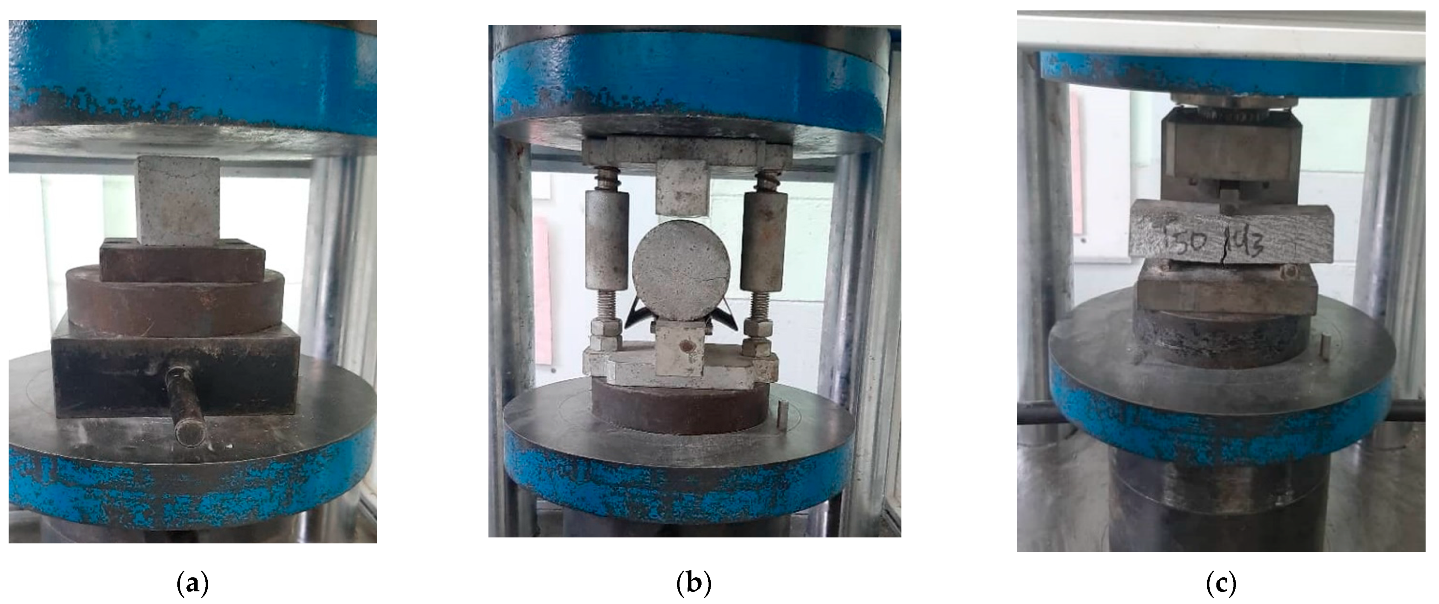
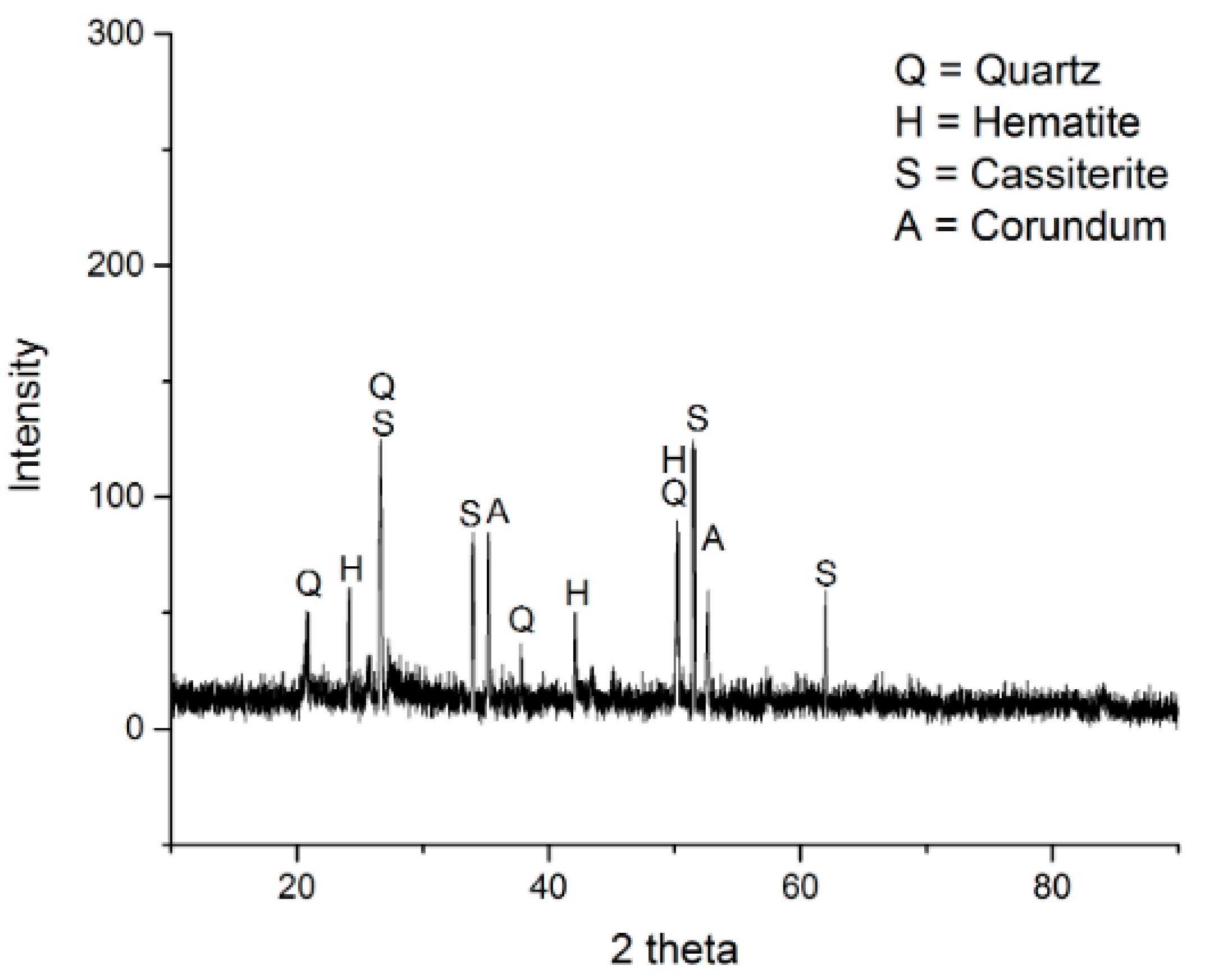
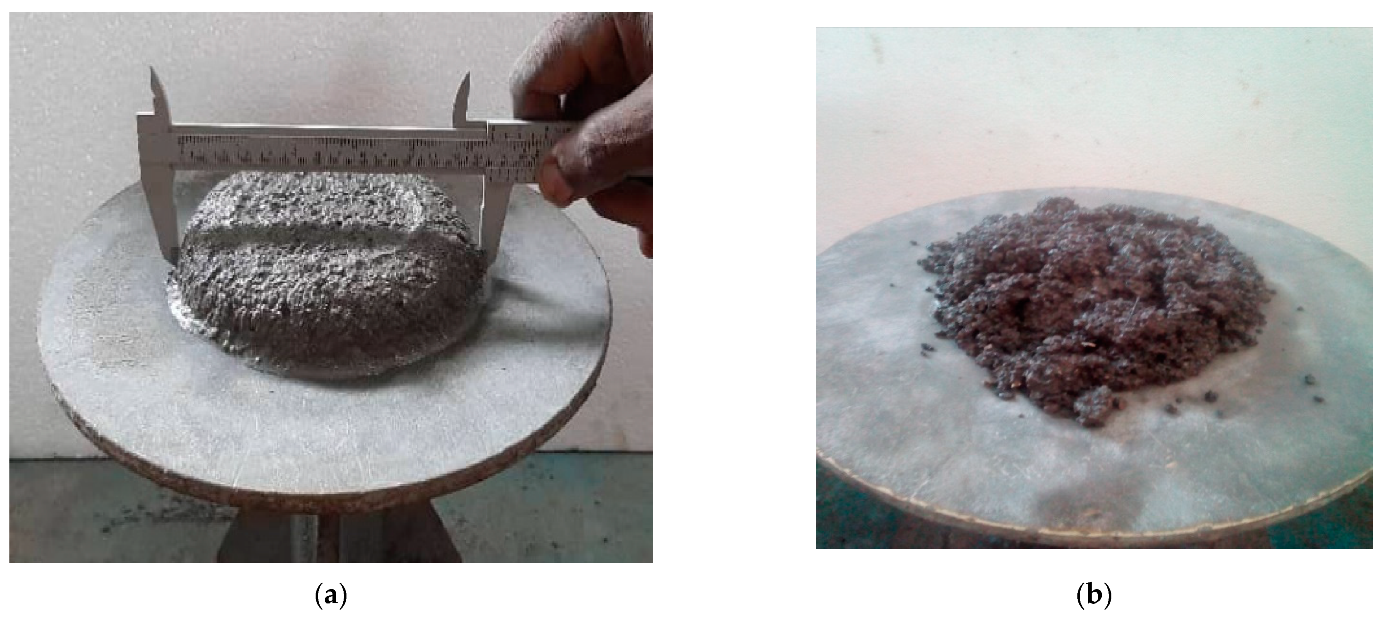
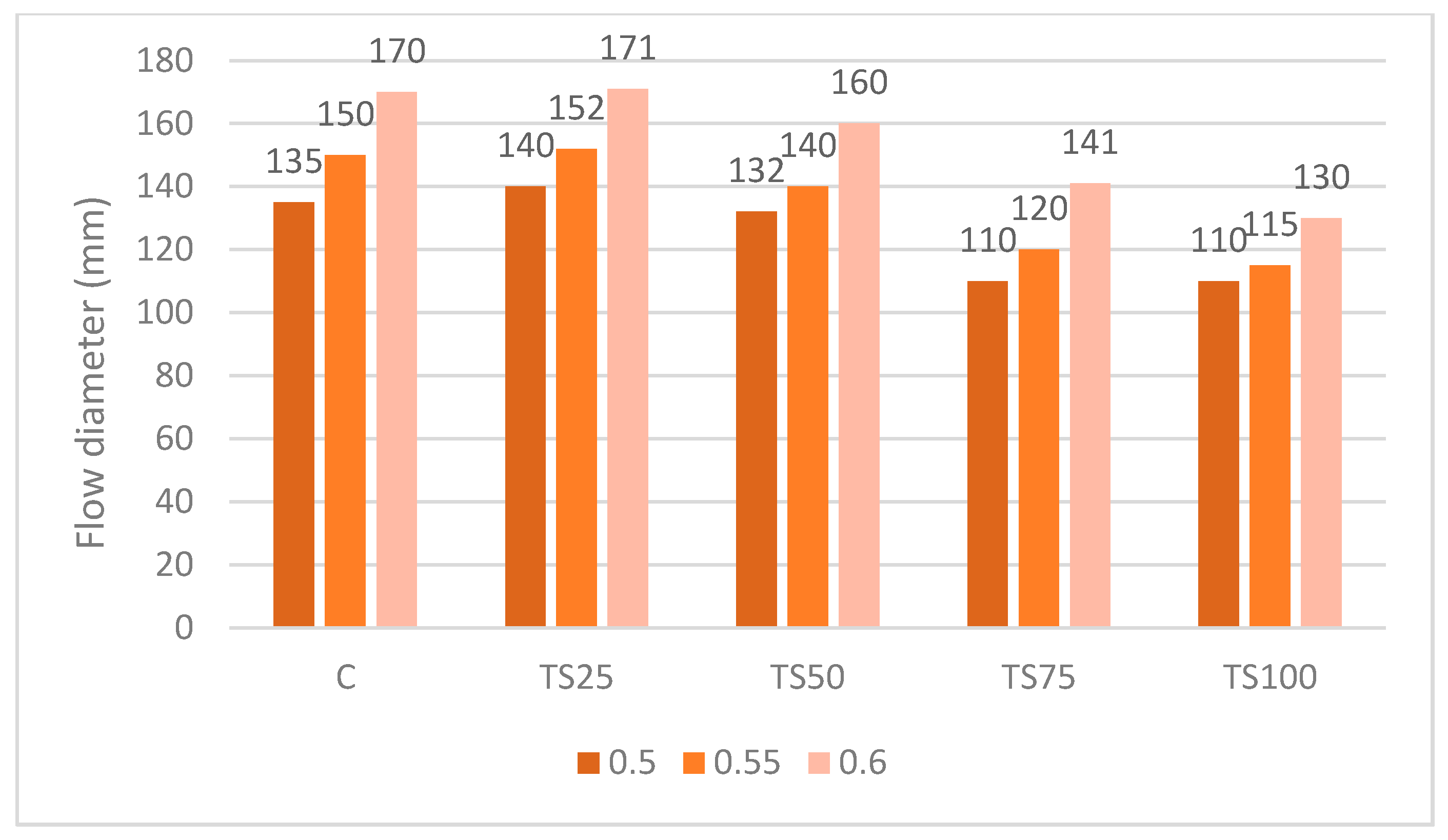

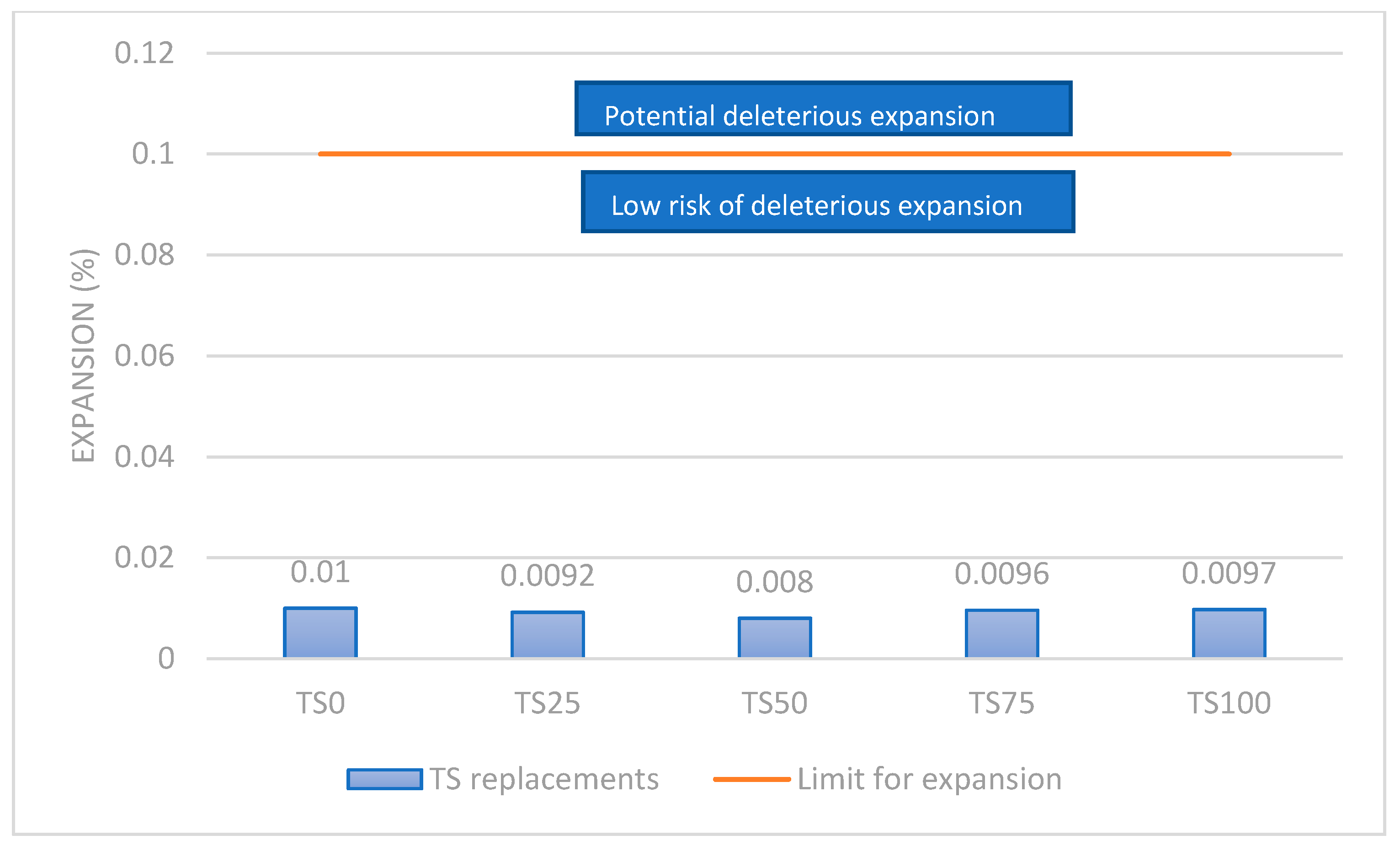
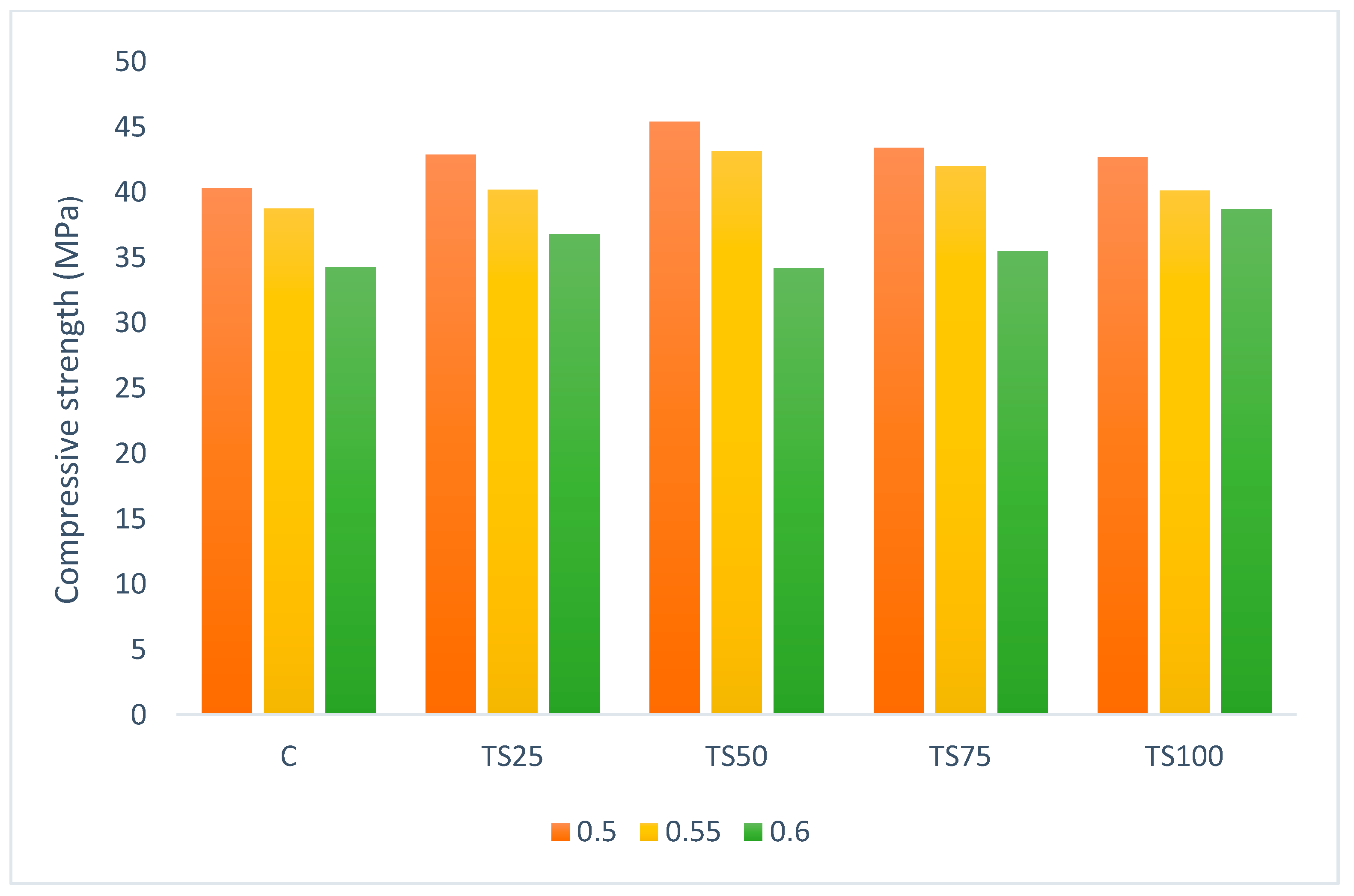





| S/N | Physical Properties | Sand | TS |
|---|---|---|---|
| 1 | Specific gravity | 2.62 | 3.0 |
| 2 | Water absorption | 2.0 | 1.98 |
| S/N | Chemical Properties | Sand | TS |
|---|---|---|---|
| 1 | Silica | 91.5 | 15.8 |
| 2 | Alumina | 3.55 | 7.10 |
| 3 | Magnesium oxide | 1.3 | 0.85 |
| 4 | Iron oxide | 1.2 | 33.4 |
| 5 | Calcium oxide | 0.5 | 21.3 |
| 6 | Titanium(IV) oxide | - | 5.74 |
| 7 | Zirconium oxide | - | 2.16 |
| 9 | Niobium(V) oxide | - | 1.36 |
| 10 | Tin(IV) oxide | - | 1.62 |
| 11 | Tantalum(V) oxide | - | 1.31 |
| 12 | Tungsten(VI) oxide | - | 3.08 |
| Designation | Fine Aggregate (%) | Replacement Levels of TS (%) |
|---|---|---|
| Control (TS0) | 100 | 0 |
| TS25 | 75 | 25 |
| TS50 | 50 | 50 |
| TS75 | 25 | 75 |
| TS100 | 0 | 100 |
| Designation | Multiplier Factor |
|---|---|
| TS25 | 1.06 |
| TS50 | 1.12 |
| TS75 | 1.16 |
| TS100 | 1.20 |
| Mix | Designation | Cement (kg) | Sand (kg) | Tin Slag (kg) | Water (kg) | w/c |
|---|---|---|---|---|---|---|
| M1 | TS0 | 530 | 1590 | 0 | 265 | 0.5 |
| M2 | TS25 | 530 | 1192.5 | 421 | 265 | 0.5 |
| M3 | TS50 | 530 | 795 | 890 | 265 | 0.5 |
| M4 | TS75 | 530 | 397.5 | 1383 | 265 | 0.5 |
| M5 | TS100 | 530 | 0 | 1908 | 265 | 0.5 |
| M6 | TS0 | 530 | 1590 | 0 | 291.5 | 0.55 |
| M7 | TS25 | 530 | 1192.5 | 421 | 291.5 | 0.55 |
| M8 | TS50 | 530 | 795 | 890 | 291.5 | 0.55 |
| M9 | TS75 | 530 | 397.5 | 1383 | 291.5 | 0.55 |
| M10 | TS100 | 530 | 0 | 1908 | 291.5 | 0.55 |
| M11 | TS0 | 530 | 1590 | 0 | 318 | 0.6 |
| M12 | TS25 | 530 | 1192.5 | 421 | 318 | 0.6 |
| M13 | TS50 | 530 | 795 | 890 | 318 | 0.6 |
| M14 | TS75 | 530 | 397.5 | 1383 | 318 | 0.6 |
| M15 | TS100 | 530 | 0 | 1908 | 318 | 0.6 |
Publisher’s Note: MDPI stays neutral with regard to jurisdictional claims in published maps and institutional affiliations. |
© 2021 by the authors. Licensee MDPI, Basel, Switzerland. This article is an open access article distributed under the terms and conditions of the Creative Commons Attribution (CC BY) license (https://creativecommons.org/licenses/by/4.0/).
Share and Cite
Olukotun, N.; Sam, A.R.M.; Lim, N.H.A.S.; Abdulkareem, M.; Mallum, I.; Adebisi, O. Mechanical Properties of Tin Slag Mortar. Recycling 2021, 6, 42. https://0-doi-org.brum.beds.ac.uk/10.3390/recycling6020042
Olukotun N, Sam ARM, Lim NHAS, Abdulkareem M, Mallum I, Adebisi O. Mechanical Properties of Tin Slag Mortar. Recycling. 2021; 6(2):42. https://0-doi-org.brum.beds.ac.uk/10.3390/recycling6020042
Chicago/Turabian StyleOlukotun, Nathaniel, Abdul Rahman Mohd Sam, Nor Hassana Abdul Shukor Lim, Muyideen Abdulkareem, Isa Mallum, and Olukotun Adebisi. 2021. "Mechanical Properties of Tin Slag Mortar" Recycling 6, no. 2: 42. https://0-doi-org.brum.beds.ac.uk/10.3390/recycling6020042





